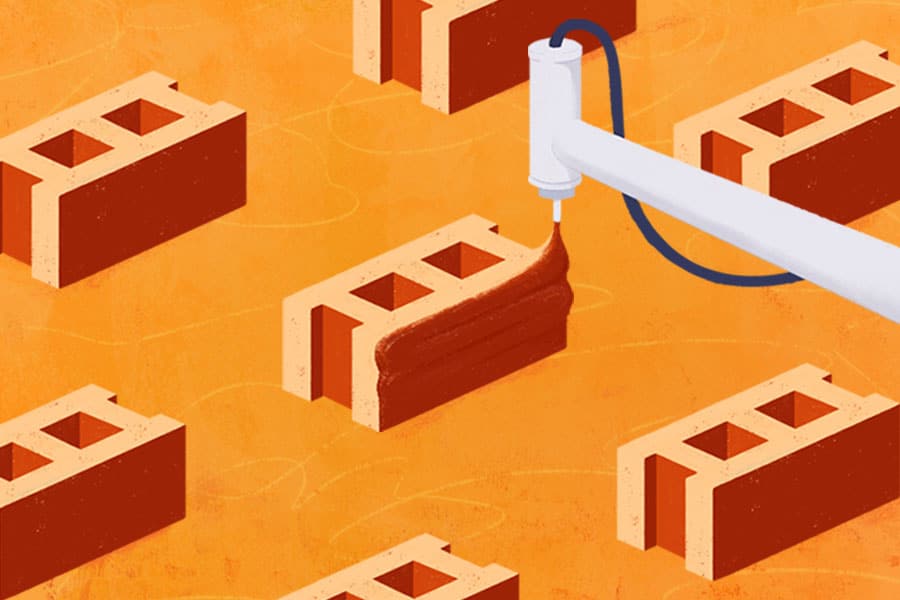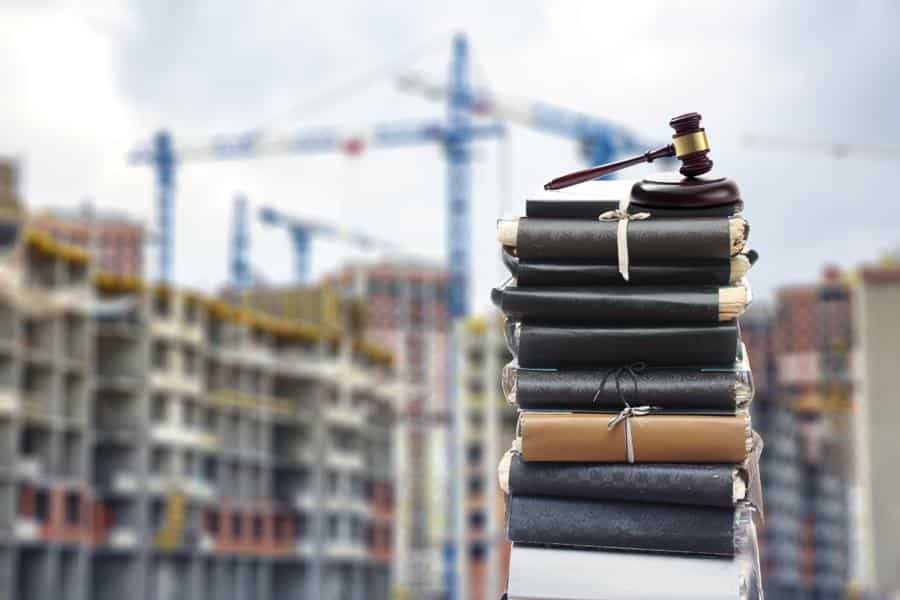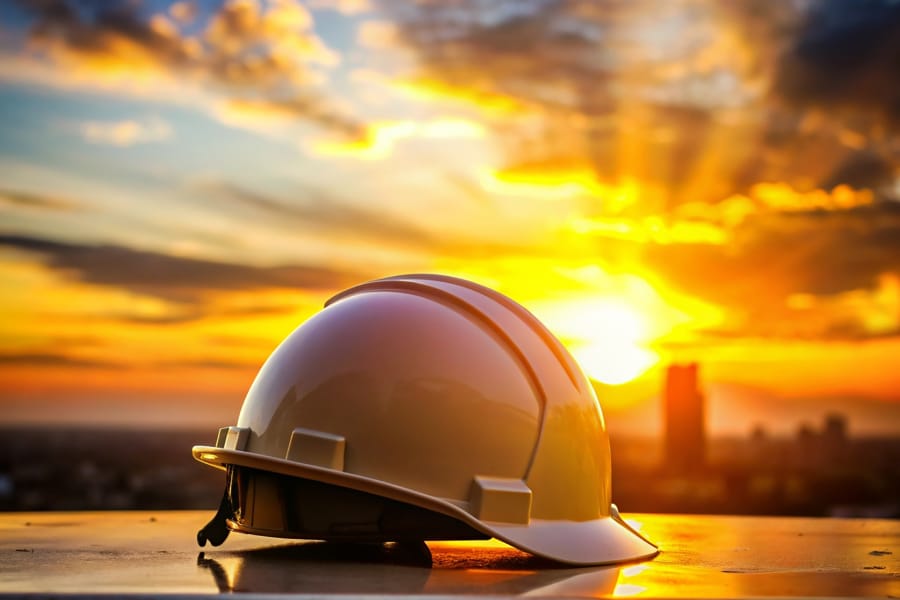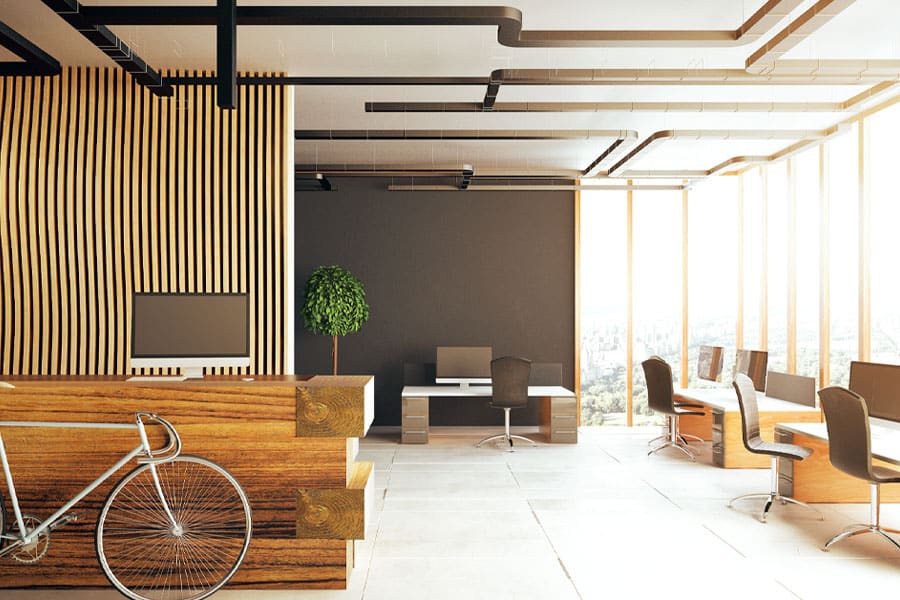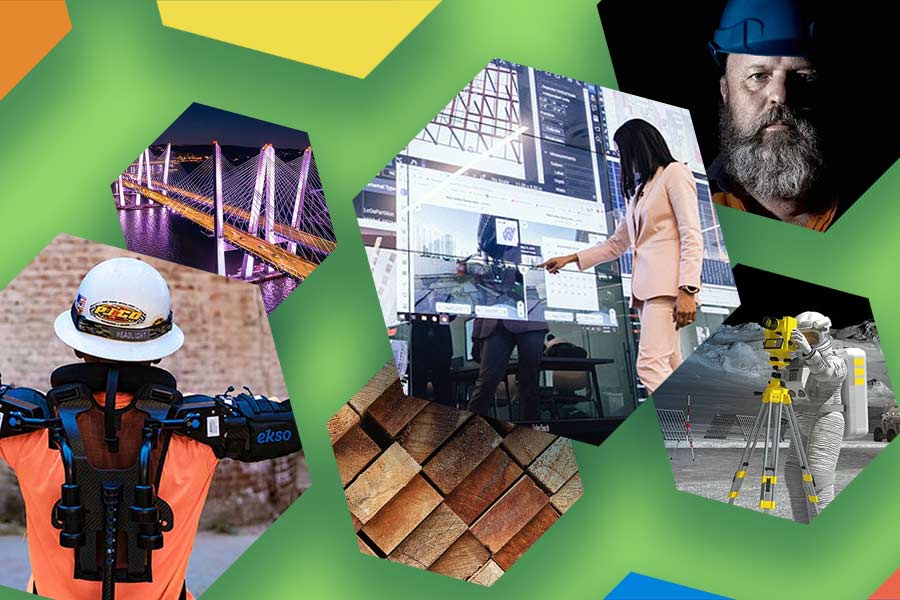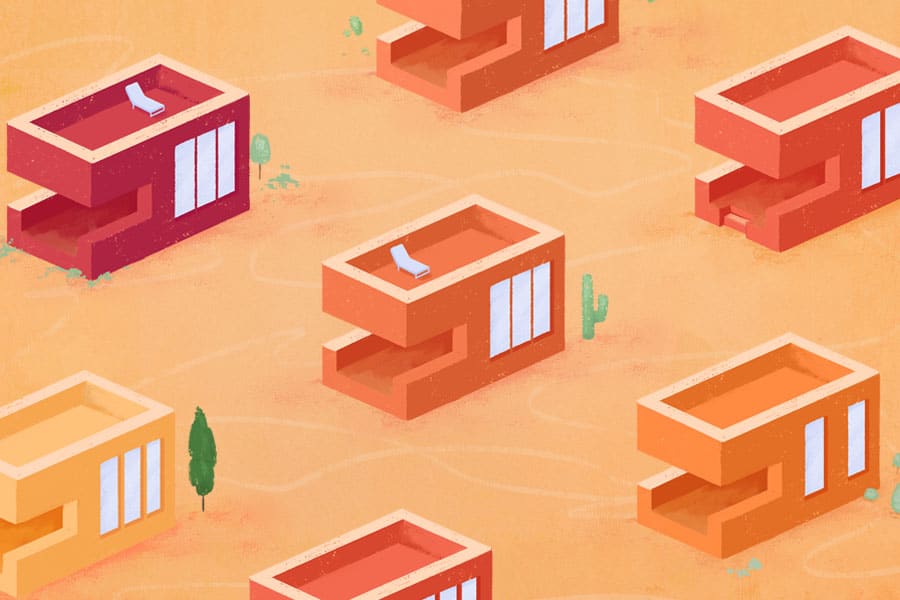Illustration by Rae Scarfó
As the climate crisis worsens, every industry must reckon with its impact on the environment. As of 2017, the building and construction industries accounted for nearly 40% of all anthropogenic carbon emissions on Earth, according to a report from World Green Building Council. To reach the goals outlined in the Paris Agreement, the industry would need to cut emissions by 30% by 2030 compared to 2015 levels. This is a massive undertaking that will require billions of dollars of investment in nearly every facet of the industry.
One area ripe for carbon-saving innovation is concrete. The material has become ubiquitous in modern building practices for good reason: It’s moldable, durable, pourable, cheap and easy to make. It’s also massively carbon intensive. The manufacturing process for concrete is responsible for 8% of man-made CO2 emissions, according to a 2018 report from the Energy, Environment and Resources Department.
Like pretty much every effort to decarbonize our world, there is no panacea for decarbonizing the concrete sector, and a plethora of vested interests and difficult realities stand in the way. Instead, progress will likely be made in thousands of tiny steps.
A radical solution
One solution is to simply not use concrete. At Texas A&M University, a group of researchers is investigating the possibility of using local soils in combination with 3D printing to create more sustainable buildings.
The prospect of using local soils is attractive for several reasons. For one, it eliminates the need to transport the mixture to a jobsite, which can be incredibly carbon-intensive. Additionally, the researchers’ protocol for creating load-bearing, printable, soil mixtures doesn’t require the immense heating needed to make concrete.
“Qualitatively speaking, this is a much better alternative to concrete,” said Aayushi Bajpayee, a Ph.D. student at Texas A&M University and the first author of a 2020 publication describing the technique. “Firstly, the generation of the material is not carbon positive. The soil is present in nature, and you’re using it directly, unlike concrete, where you have to put the things you get from nature inside a huge kiln and heat it up.”
3D printing has emerged in recent years as a useful technology for automating large amounts of the construction process, offering promising solutions for low-cost housing, especially in rapidly developing parts of the world. However, to date, the technology has relied almost entirely on concrete as the load-bearing material of choice, potentially setting the stage for massive increases in future carbon emissions if the technology catches on. Using local soils as a replacement for concrete would effectively allow Bajpayee and her colleagues to capitalize on the additive manufacturing technique without massively increasing the carbon footprint of the industry.
Challenges abound
However, soils are incredibly heterogeneous and variable across geographic regions. They range from dusty and dry to swampy and wet, with all manner of clays, rocks, minerals and biological materials intermixed. The challenge for the scientists was to create a palate of different chemical protocols that could be adapted to suit the needs of almost any given soil type on Earth.
“If we go to a place where we don’t know what type of soil is present, we can do a quick analysis and see what type of contents are in the soils, and then, using the palette of admixtures and different modifiers, we can actually start tweaking our formulations a little and start printing in that spot,” Bajpayee said.
Creating such a system relies on understanding the chemistry at play from the scale of atoms to inches. In a “proof of concept” experiment, the researchers managed to take soil—a burwash series clay—from College Station, Texas, and convert it into an extrudable, load-bearing compound that they could use in their 3D printer. Bajpayee said the extremely heterogeneous mixture of this type of soil made it an extremely challenging case.
“We proved we can print something as complex as the soil you get in your backyard, so anything from there is easier,” she said.
For more on this lab’s experimental approach, stay tuned for part 2 of this story, coming January 8, 2021.

